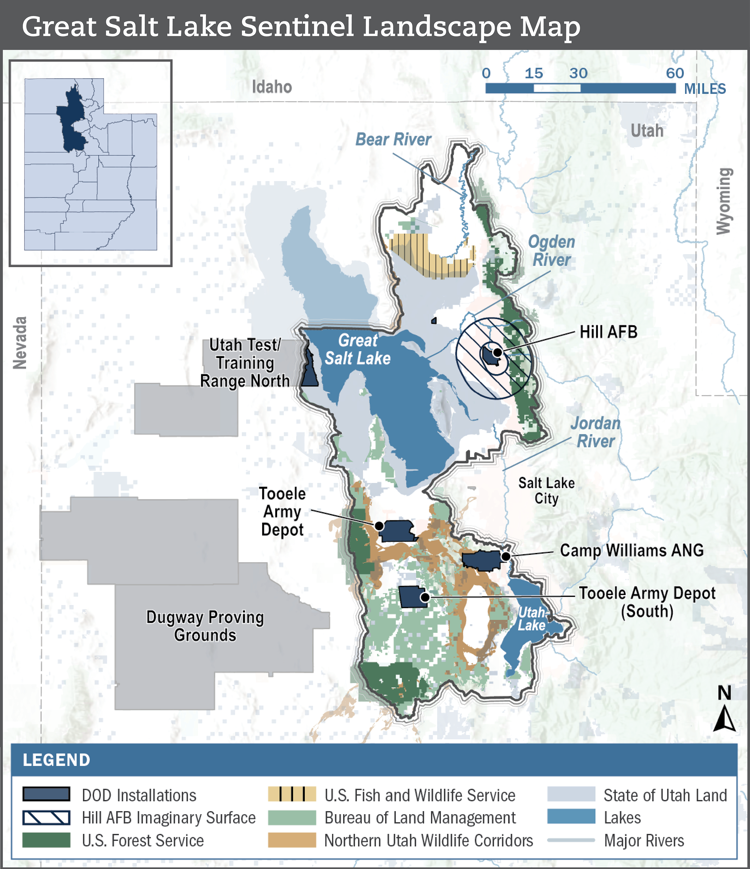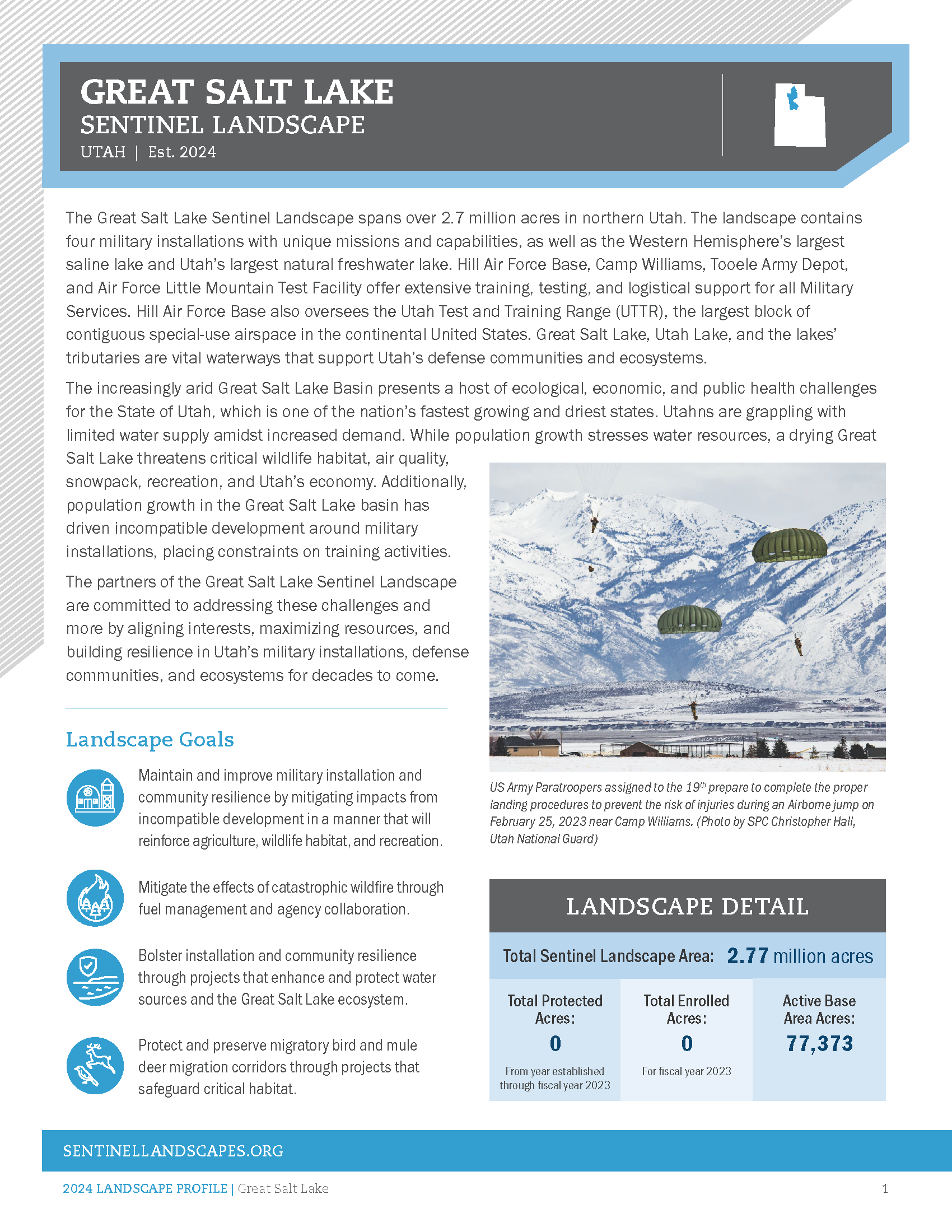Great Salt Lake Sentinel Landscape
-
Utah
-
Established 2024
About
The Great Salt Lake Sentinel Landscape spans over 2.7 million acres in northern Utah. The landscape contains four military installations with unique missions and capabilities, as well as the Western Hemisphere’s largest saline lake and Utah’s largest natural freshwater lake. Hill Air Force Base, Camp Williams, Tooele Army Depot, and Air Force Little Mountain Test Facility offer extensive training, testing, and logistical support for all Military Services. Hill Air Force Base also oversees the Utah Test and Training Range (UTTR), the largest block of contiguous special-use airspace in the continental United States. Great Salt Lake, Utah Lake, and the lakes’ tributaries are vital waterways that support Utah’s defense communities and ecosystems.
The increasingly arid Great Salt Lake Basin presents a host of ecological, economic, and public health challenges for the State of Utah, which is one of the nation’s fastest growing and driest states. Utahns are grappling with limited water supply amidst increased demand. While population growth stresses water resources, a drying Great Salt Lake threatens critical wildlife habitat, air quality, snowpack, recreation, and Utah’s economy. Additionally, population growth in the Great Salt Lake basin has driven incompatible development around military installations, placing constraints on training activities.
The partners of the Great Salt Lake Sentinel Landscape are committed to addressing these challenges and more by aligning interests, maximizing resources, and building resilience in Utah’s military installations, defense communities, and ecosystems for decades to come.

Our Partners
Federal Partners
State Partners
- Military Installation Development Authority
- The Office of the Great Salt Lake Commissioner
- Utah Association of Conservation Districts
- Utah Defense Alliance
- Utah Department of Agriculture and Food
- Utah Department of Natural Resources
- Utah Department of Veteran and Military Affairs
- Utah Division of Indian Affairs
- Utah State University Janet Quinney Lawson Institute for Land, Water and Air
- Utah Trust Lands Administration
Private Partners
- Bear River Land Conservancy
- Compatible Lands Foundation
- Ducks Unlimited
- Eagle Mountain Nature and Wildlife Alliance
- Intermountain Joint Venture
- National Fish and Wildlife Foundation
- The Conservation Fund
- The Nature Conservancy
- Utah Wildlife Federation
- Western Rivers Conservancy
- World Resources Institute
Resources
-

Great Salt Lake Landscape Profile
Meet the Coordinator

Marisa Weinberg
Marisa Weinberg serves as the Coordinator for the Great Salt Lake Sentinel Landscape. She holds a Master of Natural Resources from Utah State University, and a Bachelor of Science in Ecology and Conservation from the University of California, Berkeley. Most recently, she worked for the Utah Division of Forestry, Fire and State Lands as the Sovereign Lands Program Manager for Great Salt Lake, where she was focused on upholding the Public Trust in land management to protect and preserve the lake. With this depth of experience on Great Salt Lake, Marisa is well-poised to link ongoing conservation efforts with the goals of the Sentinel Landscape Partnership. Marisa currently resides in Salt Lake City, UT and spends most of her free time traveling, gardening, cooking, biking, and skiing.